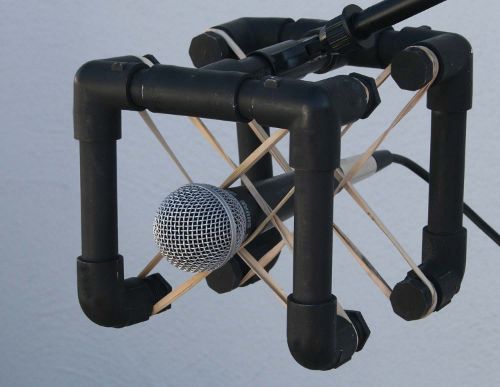We’re not suggesting that you should shout (unless that is appropriate to what you are recording).
There is a natural tendency for people to “talk to the microphone”. What happens then is that the closer the microphone is to the person, the quieter they talk, and they will often end up whispering. What is being suggested is that you half ignore the microphone, and imagine that you are talking to someone beyond the microphone. A good public speaker will make themselves heard at the back of a hall with or without the aid of a microphone, and they are not shouting. It’s not about shouting, it’s about projecting. From that short sample, I don’t think that you were whispering, but the suggestion was just to ensure that you’re aware of this natural tendency. The “imagined audience” is not necessarily at the far end of the room, but think about where they would be if this was a live presentation and not a recording. A news reader on the radio probably has the microphone about 10 cm away, but it sounds like they are talking to someone that is several meters away because they are projecting their voice as if they were addressing a group of people at a small press conference.
Microphone suspension (AKA “spider” or “shockmount”)
Here’s a commercial one:
And here’s one that Koz made from some plastic pipe and elastic bands:

(PVC Microphone Shock Mount)
Shockmounts vary tremendously in price, from less than 10 Euro (for example the t.bone SSM 4 – Thomann UK), to over 50, but they all do the same job, which is to help isolate the microphone from vibrations transmitted up through the stand. For desktop use, a cushion can work reasonably well.
Noise Gate
A Noise gate cuts off the sound when it falls below a “threshold” level. Noise gate - Wikipedia
The thing that you need to be careful of with noise gates is that it can sound unnatural if the sound suddenly cuts to total silence.
If the voice recording is being mixed with background music, then a noise gate would ideally be set up to fade out (quite rapidly) when there is no talking, then fade back in just before the talking resumes. This requires that the gate is able to “look ahead” to see when the recording is going to rise above the noise threshold. There’s a noise gate plug-in available here: Noise Gate (read the entire thread to pick up some tips on how to use it effectively). I would suggest an attack/decay time of about 0.3 seconds (30 milliseconds), gating to silence. The noise gate should be used after noise removal, not before.
A good peak recording level is about -6 dB. Setting the level higher than that is very risky as you could easily get an occasional peak that clips. Much lower than that and the background noise becomes more significant.